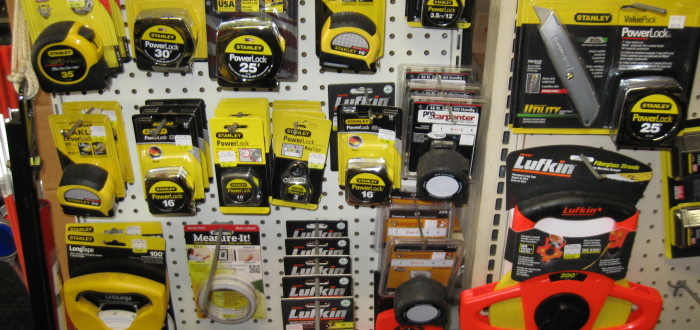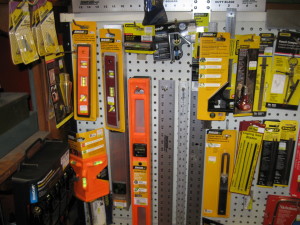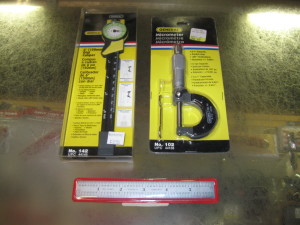One thing I run into all the time here at the Old Hardware Store is size measurements. All day long folks come into the store and say “I need a nut, bolt, screw, saw blade” or whatever, and after I lead them over to the correct aisle, the first thing I ask them is how big? At that point I either get a solid answer like 1/4 inch, 10 millimeters, or whatever, or I get a blank look and an “I don’t know” or they hold their fingers so far apart and say “about like this.” I probably don’t have to tell you which customer is more likely to go home with the right part.
That brings us to this week’s topic, measuring, and the tools to do it properly. The handiest two measuring tools to have around the house are a measuring tape and a yardstick. Our yardstick is most often used to fish the dog’s ball out from under the furniture, so it’s the tape measure that I reach for when I need to measure something. For those that don’t know, a tape measure is a long ruler that is rolled up in a case for convenient use. The small ones are usually metal (spring steel) and are contained in a plastic or metal case, often with a belt hook on the back. They are marked on one side with inches and feet (in this country), although I have one here that has English markings (inches) on one edge, and metric on the other, very handy sometimes.
They come in different sizes (see a pattern forming here?) both in different widths, 1/4” to 1” and different lengths, from 3 foot up to 100 foot or more. The small ones are spring loaded, meaning that they will automatically retract into their cases when you are through with them. Longer ones have a crank on the side and must be reeled in by hand. Most have a lock on them so that once you have them out to the right length, you can push a button to prevent them from retracting. We also have one with a reverse lock, when you pull it out, it automatically stays there until you push and hold a release. Also, a warning, don’t release a heavy, long tape when it’s pulled out a long way, the impact when it finishes rewinding will knock it right out of your hand.
Yardsticks and rules are just different lengths of the same thing. Rules start at 6 inches, and go up to about 6 feet. Any longer and they wouldn’t be very handy. Rules can be plastic, wood, aluminum or steel. The better ones have the graduations incised into the rule and not just printed on, so they don’t wear off.
Precision measuring is a science unto itself, Machinist rules, calipers and micrometers can be used to measure to a surprising accuracy. A normal “mic”, as they are called, can measure to .001” or one thousandth of an inch, and a good (read expensive) one can go to one ten-thousandth. For comparison, a hair is about .004” in diameter, so that’s pretty small. This kind of precision isn’t usually necessary in the hardware store, but it’s nice to know how to measure it if you need to.
That about covers the types of measuring devices available at the hardware store, next week we’ll cover how to use them. ‘Till then…



